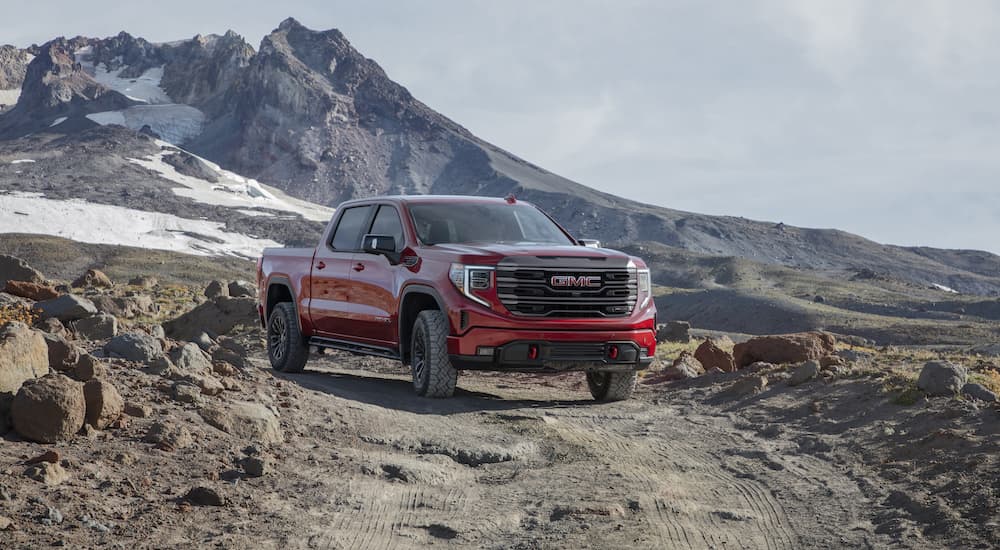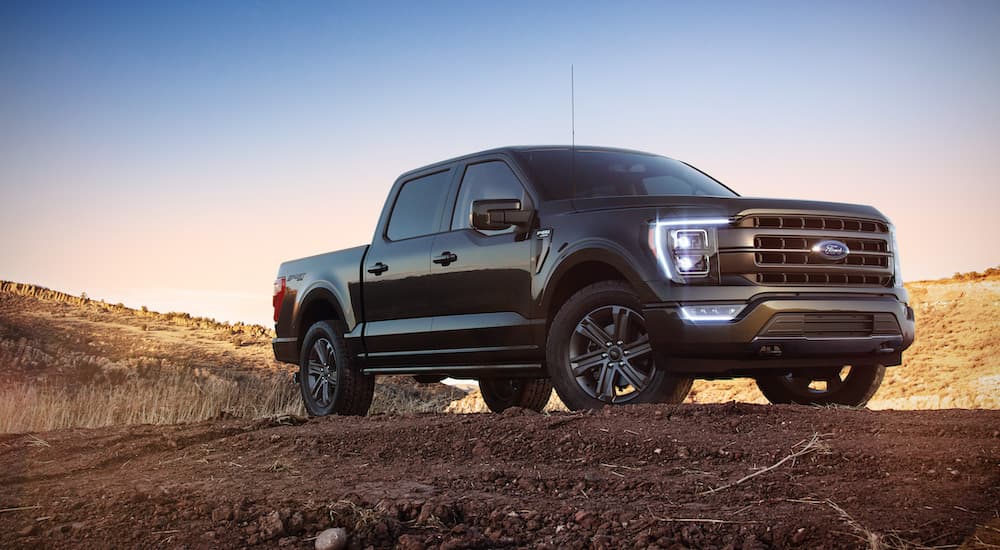Have you ever stopped to wonder why cars are always identified by a model year? It may seem obvious on the surface–cars change every year, and the model year tells you what year it was built. But while that is partly true, it isn’t entirely accurate, and it isn’t the full story. Many model years are virtually unchanged from the year before, and we all know that the new model year usually becomes available long before January 1st rolls around. The new crop of EV startups led by Tesla has also eschewed the traditional model year cycle, adding more confusion to what at first appeared to be a simple concept. If you are having trouble pinning down what a model year means, CarBuyerLabs is here to help.
The History of Vehicle Model Years
Back in the early days of cars, model years were not an important part of the industry. The model year was simply the calendar year that the vehicle was produced in, and people generally only paid attention to model years when there was a significant change to the model. It might be surprising to anyone used to the modern American car market, but that is still how model years work in most of the world. If you open up a manufacturer website for a European country, you will realize that there is virtually no mention of model years. You might see an “all-new” label for a recently redesigned model, but you won’t see listed model years for every product.
So how did model years become such an intrinsic part of the American automobile industry? The answer is capitalism, combined with a healthy dose of cynicism. The inventor of the modern model year was Alfred Pritchard Sloan Jr, CEO of GM from 1923 to 1956 and chairman of the board for many of those years. While Ford happily churned out the Model T for nearly 20 years with minimal changes, Sloan realized that Americans would pay more for the latest and greatest–or at least the appearance of having the latest and greatest–and implemented a policy of changing GM models every year. The changes could be as simple as slightly different colors and pieces of trim, but they were enough to let everyone know who had a new car and who was driving last year’s model.
This seemingly shallow policy was an incredible success, and every other manufacturer was soon forced to follow suit as drivers sought to get behind the wheel of something that looked newer and more stylish. However, even the most cynical capitalist was insufficient to pull model years out of sync with calendar years–to that, we owe the altruism of the United States government. Since assembly lines needed to shut down and retool for the new model year, having model years tied to calendar years meant that factory workers could find themselves temporarily out of work during the holidays. President Franklin Delano Roosevelt decided that shouldn’t happen and signed an executive order making new model years start in the fall of the preceding year.
Today, manufacturers have incredibly wide latitude when it comes to deciding the model year of a vehicle. In fact, model years can be introduced as early as the January 2 of the preceding year or as late as December 31 of the same year. That means that right now, one manufacturer could already be releasing 2023 models while another is still building 2021 models. However, every model sold in the US is still legally required to have a model year, and you can find a vehicle’s model year by looking at the 10th digit of the VIN. The code uses a revolving cycle of letters and numbers to mark model years, but a 2022 model can be identified by a “P” while a 2023 model will have an “R” (I, Q, U, and Z are skipped in the sequence to avoid confusion with other letters).
Model Years, Refreshes, and Redesigns
It is always important to know the model year of a vehicle when you are shopping for a new car, but the year itself is less important than knowing where it stands in the model’s lifecycle. Modern manufacturers no longer adhere so strictly to the continuous model year changes advocated by Alfred P. Sloan, and many “new” model year vehicles are now identical to the model year that preceded them. However, manufacturers still update their models regularly, and it is rare for any model to go for more than a year or two without changes.
Most models have a product life cycle that includes a full redesign every five years and a major refresh (commonly known as a “facelift”) midway between redesigns. Each period between redesigns is referred to as a “generation,” and it is particularly important to keep generations in mind when shopping for used cars. There are plenty of exceptions to the general rule, particularly when you look at niche vehicles or low production models, but most popular models from the majority of manufacturers stick to a roughly five-year life cycle.
When a vehicle is refreshed, it will commonly receive a few exterior styling changes to the front and rear ends, new tech features that have been introduced since the generation was launched, and occasionally new engines and other mechanical upgrades. A mid-cycle refresh is a chance for the manufacturer to correct any flaws in a model, so you will generally see minor changes on popular models and major changes on models that aren’t selling as well as desired. Some of the more extensive refreshes can come close to being a full redesign, such as the recent overhauls of the 2022 Chevy Silverado and 2022 GMC Sierra, which brought new looks, new tech, and new levels of performance.

So what separates a refresh from a redesign? A redesign will generally make extensive changes to the platform the model rides on, often dramatically changing the size, shape, and performance of the vehicle. To take another truck as an example, the redesigned 2022 Toyota Tundra changed from rear leaf springs to rear coil springs, moved to a fully-boxed frame, and added a composite bed in addition to upgrading to a far more powerful turbocharged hybrid powertrain. However, not every redesign is so extensive. The redesigned 2021 Ford F-150, for instance, is nearly indistinguishable from the 2020 F-150, even though it includes several major new features.

In the case of the F-150, the subtle nature of the 2021 redesign was because Ford had a best-selling product on its hands and didn’t want to mess with success. However, there are many reasons why manufacturers will roll out conservative redesigns or even choose to break the typical five-year cycle entirely. Sports cars, for example, tend to be extremely low volume vehicles with much longer life cycles, and the Nissan GT-R is a shining example of this. Introduced for the 2009 model year, the GT-R has seen two minor refreshes and five increases in engine power but no major redesign and is still in production today.
Tesla and Model Years
The traditional car manufacturers have settled into a fairly established pattern of model year based refreshes and redesigns, but the new crop of EV startups are challenging that trend. While Tesla is still legally required to have model years for its vehicles, the company does not advertise them, and two Teslas from the same model year can have significant differences. For instance, partway through the 2021 model year, Tesla stopped including radar sensors in the Model 3 and Model Y, relying entirely on cameras for its driver-assist technology. On one hand, constant changes like this mean Tesla’s customers gain access to the latest technology without having to wait for the next model year. On the other hand, it makes it difficult to know exactly what features a given Tesla has.
It remains to be seen how closely other EV startups like Lucid and Rivian will follow Tesla’s lead, but they are already not advertising model years on their websites, and other aspects of their business models are closely modeled on Tesla’s. The rapid pace of development for EV technology likely contributes to Tesla’s unorthodox approach to model years, but it remains to be seen whether mid-year changes are something that will go away as the technology matures and Tesla grows, or whether more manufacturers will begin to embrace the idea. For now, it merely adds another layer of complexity to the subject of model years.
Car Shopping May Not Be Easy, But At Least It’s Interesting
When shopping for your next car, truck, or SUV, it is always important to look up the model lifecycle and generations. If you are shopping for a new model, knowing that a refresh or redesign has recently occurred or is expected to arrive soon can give you bargaining leverage or inform your decision on when to buy. If you are shopping for a used model, understanding generations is also critical to making sure that you get the features and performance that you are looking for. While America’s obsession with having the latest model car may no longer be quite as strong as when Alfred P. Sloan introduced the modern idea of model years, a passing understanding of what model years really mean may just help you score a bargain on your next vehicle.



